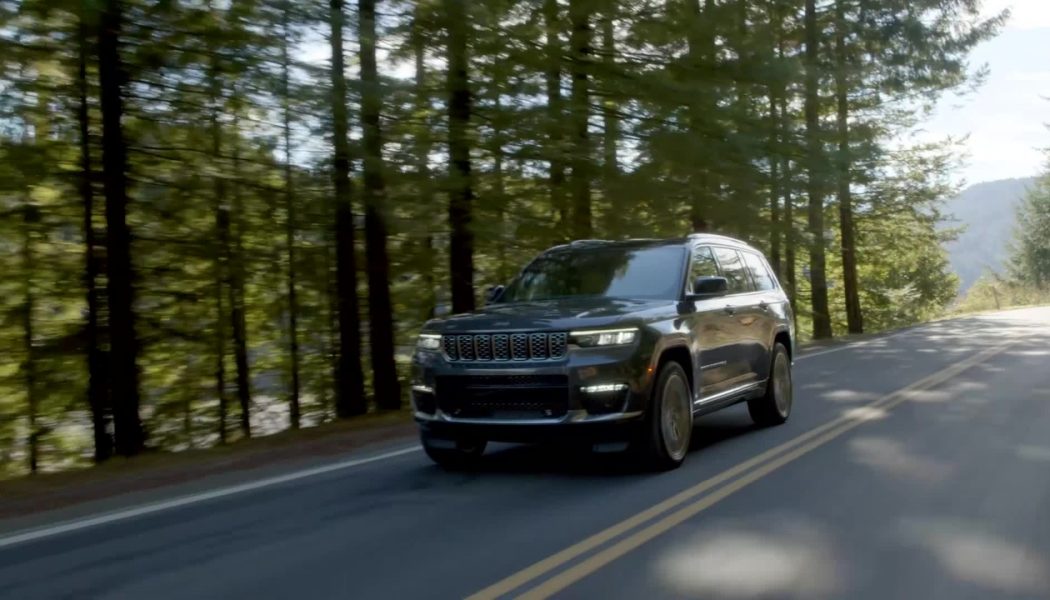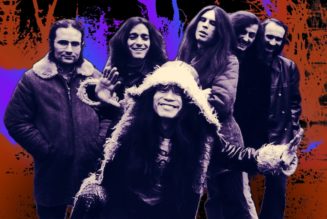Big Engine, Old Grand Cherokee
To appreciate how goofball the “5.9” was, you must first backtrack and revisit the original “ZJ” Grand Cherokee. In 1998, the Jeep was nearing the end of its first-generation, having been introduced for 1993. Despite its semi-modern window dressing, tidy dimensions, and comfortable interior, the Grand Cherokee was still an SUV in the traditional sense. Its narrow, boxy body teetered high atop a pair of solid axles, and four-wheel-drive models carried beefy low-range transfer cases engaged by a muscular lever between the front seats. The modern, independently sprung, wide-tired, lowered Grand Cherokee SRT this was not.
Presaging modern-day Chrysler’s go-to move—shoving supercharged Hellcat V-8 engines into nearly every vehicle it makes as a way of keeping those rides fresh—someone at Jeep looked at the soon-to-be-replaced Grand Cherokee and figured it was due for an unnecessary injection of horsepower. Previously the Jeep had been available with 190-hp 4.0-liter inline-six that could be traced back to Jeep’s AMC ownership and, later, a 225-hp 5.2-liter “Magnum” V-8. But for 1998, the last model year before the second-generation Grand Cherokee arrived for 1999, Jeep added a 5.9-liter V-8 option that punched out 245 hp and 345 lb-ft of torque, improvements of 20 hp and 45 lb-ft over the Magnum V-8.
It Was the Quickest SUV We’d Ever Tested
In 1997, we tested the Grand Cherokee Limited 5.9. It reached 60 mph in 6.8 seconds and smoked the quarter-mile in 15.2 seconds at 88.7 mph. That made it well over a second quicker to the same mark than the next-quickest, 5.2-liter Grand Cherokee, and the quickest SUV we’d ever tested at that time.
Perhaps the coolest aspect of this hot-rod Jeep was how subtle it was. Unlike today’s Grand Cherokee SRT, which squats low on stiffened suspension pieces and rolls on fat performance tires and snarls through huge front intakes and a hood scoop, the ’98 Limited 5.9 looked pretty much like any other Grand Cherokee. Jeep added some nifty louvered hood vents, along with specific five-spoke wheels and a larger exhaust outlet. “Limited 5.9” badges rounded out the visual changes. Otherwise, it was as plush and stuffed with leather, wood, and fancy features as the non-5.9-powered Limited trim level.
… and It Would Prove an Inspiration
In many ways, the Grand Cherokee Limited 5.9, an old-school, solid-axle 4×4 with a saucy engine, presaged not only today’s SRT models but also the high-po Mercedes-Benz G-Class SUVs that would become increasingly popular among the rich here in America. Like the Jeep, the G-Wagen could be had with V-8 engines of increasingly unhinged outputs, sending power to a pair of stick axles. Tippy and with slow steering and a design dating back to the late 1970s, the G-Class was, if anything, even less suited to hot-rodding than the comparatively modern Grand Cherokee. And yet, Mercedes began introducing stuff like the G55 AMG and, later, the G63 and even the twelve-cylinder G65.
Jeep would take a beat to revisit the fast-Cherokee format, letting an entire generation of Grand Cherokee models pass before introducing the first-ever Grand Cherokee SRT8 for 2006. Its 420-hp 6.1-liter V-8 and wild looks outshone the Porsche Cayenne Turbo of the period. Later, the fourth-generation Grand Cherokee continued the SRT trend, using a 475-hp 6.4-liter V-8 before adding the 707-hp supercharged 6.2-liter “Hellcat” V-8 engine to the lineup’s Trackhawk model. For a time, that Trackhawk was once again the quickest SUV we’d ever tested.
Now, with a new Grand Cherokee on the horizon, we have little doubt it’ll once again be available with huge power, and it can trace that legacy back to the ol’ 5.9.










